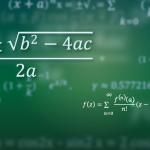An illustration inspired by a figure in Stiglitz, J.E. and Greenwald, B. (2003). Towards a New Paradigm in Monetary Economics.

Edit and compile if you like:
% Author: Rasmus Pank Roulund
\documentclass{minimal}
\usepackage{tikz}
\usetikzlibrary{arrows,calc}
\tikzset{
%Define standard arrow tip
>=stealth',
%Define style for different line styles
help lines/.style={dashed, thick},
axis/.style={<->},
important line/.style={thick},
connection/.style={thick, dotted},
}
\begin{document}
\begin{tikzpicture}[scale=1]
% Axis
\coordinate (y) at (0,5);
\coordinate (x) at (5,0);
\draw[<->] (y) node[above] {$r$} -- (0,0) -- (x) node[right]
{$\mathit{EV}$};
% A grid can be useful when defining coordinates
% \draw[step=1mm, gray, thin] (0,0) grid (5,5);
% \draw[step=5mm, black] (0,0) grid (5,5);
% Let us define some coordinates
\path
coordinate (start) at (0,4)
coordinate (c1) at +(5,3)
coordinate (c2) at +(5,1.75)
coordinate (slut) at (2.7,.5)
coordinate (top) at (4.2,2);
\draw[important line] (start) .. controls (c1) and (c2) .. (slut);
% Help coordinates for drawing the curve
% \filldraw [black]
% (start) circle (2pt)
% (c1) circle (2pt)
% (c2) circle (2pt)
% (slut) circle (2pt)
\filldraw [black]
(top) circle (2pt) node[above right, black] {$Q$};
% We start the second graph
\begin{scope}[xshift=6cm]
% Axis
\coordinate (y2) at (0,5);
\coordinate (x2) at (5,0);
\draw[axis] (y2) node[above] {$r$} -- (0,0) -- (x2) node[right] {$L$};
% Define some coodinates
\path
let
\p1=(top)
in
coordinate (sstart) at (1,.5)
coordinate (sslut) at (4, 4.5)
coordinate (dstart) at (4,.5)
coordinate (dslut) at (1,4.5)
% Intersection 1
coordinate (int) at (intersection cs:
first line={(sstart)--(sslut)},
second line={(dstart)--(dslut)})
% Intersection 2
coordinate (int2) at (intersection cs:
first line={(top)--($(10,\y1)$)},
second line={(dstart)--(dslut)})
% Intersection 3
coordinate (int3) at (intersection cs:
first line={(top)--($(10,\y1)$)},
second line={(sstart)--(sslut)});
% Draw the lines
\draw[important line] (sstart) -- (sslut) node[above right] {$S$}
(dstart) -- (dslut) node[above left] {$D$};
\draw[connection] let \p1=(int2), \p2=(int3) in
(int2)--(\x1,0) node[below] {$\mathit{L_D}$}
(int3)--(\x2,0) node[below] {$\mathit{L_S}$};
\end{scope}
%Finally, connect the two graphs
\draw[connection] let \p1=(top), \p2=(x2) in (0,\y1) node[left]
{$r^*$} -- (\x2, \y1);
\end{tikzpicture}
\end{document}
Click to download: credit-rationing.tex • credit-rationing.pdf
Open in Overleaf: credit-rationing.tex

